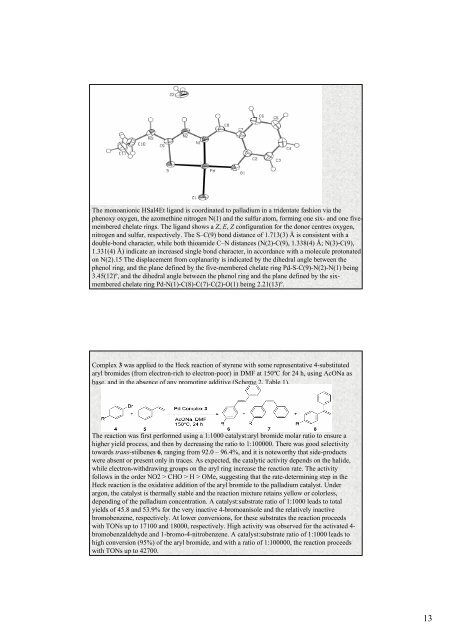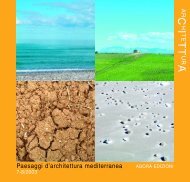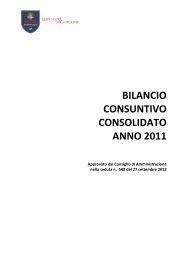Historical Perspective of the Heck Reaction
Historical Perspective of the Heck Reaction
Historical Perspective of the Heck Reaction
Create successful ePaper yourself
Turn your PDF publications into a flip-book with our unique Google optimized e-Paper software.
The monoanionic HSal4Et ligand is coordinated to palladium in a tridentate fashion via <strong>the</strong><br />
phenoxy oxygen, <strong>the</strong> azomethine nitrogen N(1) and <strong>the</strong> sulfur atom, forming one six- and one fivemembered<br />
chelate rings. The ligand shows a Z, E, Z configuration for <strong>the</strong> donor centres oxygen,<br />
nitrogen and sulfur, respectively. The S–C(9) bond distance <strong>of</strong> 1.713(3) Å is consistent with a<br />
double-bond character, while both thioamide C–N distances (N(2)-C(9), 1.338(4) Å; N(3)-C(9),<br />
1.331(4) Å) indicate an increased single bond character, in accordance with a molecule protonated<br />
on N(2).15 The displacement from coplanarity is indicated by <strong>the</strong> dihedral angle between <strong>the</strong><br />
phenol ring, and <strong>the</strong> plane defined by <strong>the</strong> five-membered chelate ring Pd-S-C(9)-N(2)-N(1) being<br />
3.45(12)º, and <strong>the</strong> dihedral angle between <strong>the</strong> phenol ring and <strong>the</strong> plane defined by <strong>the</strong> sixmembered<br />
chelate ring Pd-N(1)-C(8)-C(7)-C(2)-O(1) being 2.21(13)º.<br />
Complex 3 was applied to <strong>the</strong> <strong>Heck</strong> reaction <strong>of</strong> styrene with some representative 4-substituted<br />
aryl bromides (from electron-rich to electron-poor) in DMF at 150ºC for 24 h, using AcONa as<br />
base, and in <strong>the</strong> absence <strong>of</strong> any promoting additive (Scheme 2, Table 1).<br />
The reaction was first performed using a 1:1000 catalyst:aryl bromide molar ratio to ensure a<br />
higher yield process, and <strong>the</strong>n by decreasing <strong>the</strong> ratio to 1:100000. There was good selectivity<br />
towards trans-stilbenes 6, ranging from 92.0 – 96.4%, and it is noteworthy that side-products<br />
were absent or present only in traces. As expected, <strong>the</strong> catalytic activity depends on <strong>the</strong> halide,<br />
while electron-withdrawing groups on <strong>the</strong> aryl ring increase <strong>the</strong> reaction rate. The activity<br />
follows in <strong>the</strong> order NO2 > CHO > H > OMe, suggesting that <strong>the</strong> rate-determining step in <strong>the</strong><br />
<strong>Heck</strong> reaction is <strong>the</strong> oxidative addition <strong>of</strong> <strong>the</strong> aryl bromide to <strong>the</strong> palladium catalyst. Under<br />
argon, <strong>the</strong> catalyst is <strong>the</strong>rmally stable and <strong>the</strong> reaction mixture retains yellow or colorless,<br />
depending <strong>of</strong> <strong>the</strong> palladium concentration. A catalyst:substrate ratio <strong>of</strong> 1:1000 leads to total<br />
yields <strong>of</strong> 45.8 and 53.9% for <strong>the</strong> very inactive 4-bromoanisole and <strong>the</strong> relatively inactive<br />
bromobenzene, respectively. At lower conversions, for <strong>the</strong>se substrates <strong>the</strong> reaction proceeds<br />
with TONs up to 17100 and 18000, respectively. High activity was observed for <strong>the</strong> activated 4bromobenzaldehyde<br />
and 1-bromo-4-nitrobenzene. A catalyst:substrate ratio <strong>of</strong> 1:1000 leads to<br />
high conversion (95%) <strong>of</strong> <strong>the</strong> aryl bromide, and with a ratio <strong>of</strong> 1:100000, <strong>the</strong> reaction proceeds<br />
with TONs up to 42700.<br />
13








